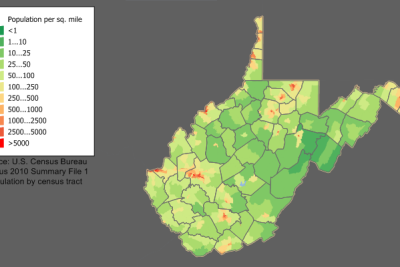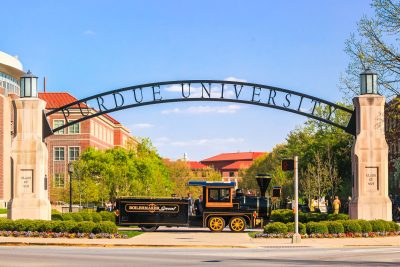
Utah: Explore Rocky Mountains, Deserts, and Mormon Heritage

Utah is a state of breathtaking contrasts, where the majestic Rocky Mountains rise dramatically against the expansive deserts that define much of its landscape. Visitors to Utah can explore the endless outdoor adventures that await, while also uncovering the rich history and culture that stem from the state's deeply rooted Mormon heritage. From skiing in the mountains to hiking through stunning canyons, Utah is the ultimate destination for those seeking a diverse experience that combines natural beauty and historical significance.
The unique fabric of Utah is woven together by stunning topographical features, a vibrant culture, and a historical journey marked by the Mormons in Utah. These settlers transformed the arid landscape into thriving communities, all while preserving their religious values and traditions. Whether you're here to enjoy the picturesque scenery or to learn about the fascinating stories of the Utah Mormons, this state promises an experience like no other.
- The Allure of the Rocky Mountains
- Discovering Utah's Unique Deserts
- The Rich Tapestry of Mormon Heritage
- Statehood and the Transformation of Utah
- The Impact of Military and Economic Development
- Navigating Growth and Cultural Preservation
- The Legacy of the 2002 Winter Olympics
- Conclusion: Experience the Diversity of Utah
The Allure of the Rocky Mountains
The Rocky Mountains provide a stunning backdrop to Utah's expansive terrain. Stretching across the western United States, this mountain range is not only known for its rugged beauty but also for the variety of outdoor activities it offers. From skiing, snowboarding, and snowshoeing in the winter months to hiking, rock climbing, and mountain biking in the summer, the Rockies invite adventure seekers year-round. Notable locations such as Park City and Big Cottonwood Canyon are prominent destinations for both locals and tourists alike.
While exploring these mountains, visitors can also appreciate the ecological diversity found within the region. The alpine forests, lush valleys, and sparkling lakes host a variety of wildlife, making it a perfect location for nature enthusiasts. The opportunity to view mountain goats, elk, and even the occasional bald eagle adds to the allure of this remarkable area. With their striking beauty and unique ecosystems, the Rocky Mountains truly exemplify why Utah is a must-visit destination.
Outdoor Activities in the Rocky Mountains
- Skiing: Utah is renowned for its world-class ski resorts, including Snowbird, Alta, and Deer Valley.
- Hiking: Numerous trails range from easy to challenging, showcasing stunning vistas and diverse habitats.
- Mountain Biking: The trails around Park City and Moab are popular for bike enthusiasts.
Discovering Utah's Unique Deserts
Transitioning from the towering peaks of the Rocky Mountains, one can find the deserts of Utah, which are equally captivating. The state is home to striking desert landscapes, characterized by red rock formations, towering mesas, and expansive canyons. Notable parks like Arches National Park and Canyonlands National Park offer unparalleled opportunities for exploration and photography.
The allure of Utah's deserts lies not only in their stunning vistas but also in their rich geological history. The unique rock formations and ancient petroglyphs tell the stories of the ancestral Puebloans and early American settlers. Adventurous travelers can engage in activities such as off-roading, rock climbing, and stargazing—each made more memorable by the desert's breathtaking backdrop.
Unique Flora and Fauna
Despite extreme temperatures and arid conditions, Utah's deserts are teeming with life. From the iconic cacti and sagebrush to the playful desert bighorn sheep, the biodiversity found here is remarkable. Guided tours often educate visitors about the unique ecosystems and adaptations of desert wildlife, ensuring a more enriching experience during your travels.
The Rich Tapestry of Mormon Heritage
Utah's history is deeply intertwined with the narrative of the Mormons in Utah. In the early 19th century, when religious persecution drove many members of the Church of Jesus Christ of Latter-day Saints (LDS Church) from their homes, they sought refuge in the mountains and valleys of Utah. Led by the prophet Brigham Young, they established Salt Lake City as a religious and cultural center, giving rise to a community defined by shared beliefs and industrious spirit.
The early Utah Mormons transformed the arid region into a flourishing society, implementing irrigation techniques that enabled agriculture in harsh conditions. Their emphasis on community and cooperation is still visible today through initiatives like Deseret Industries SLC Utah, which provides job training and employment to individuals in need, aligning with their foundational values of hard work and service.
Sites of Interest
- The Salt Lake Temple: An iconic symbol of Mormon Utah, this temple is a testament to the faith and determination of early settlers.
- The Church History Museum: This museum provides insights into the history and development of the LDS Church in Utah.
- Historic Temple Square: A notable destination for visitors, featuring gardens, historic architecture, and cultural events.
Statehood and the Transformation of Utah
Utah's journey to statehood is a complex one, marked by struggle and perseverance. After initial attempts in 1849 to gain statehood under the name "Deseret" were rejected, the political landscape continued to evolve. Mormon influence in the government sparked concerns from the federal government, prompting legislative measures to curtail church involvement in politics and social issues.
In 1896, Utah was finally admitted as a state, officially transitioning from a theocratic system to a democracy. This shift opened the doors for non-Mormons to participate in the political process, further diversifying the state's leadership. As the population grew post-statehood, with many individuals moving to Utah for opportunities, the social fabric of the region began to change significantly.
The Impact of Military and Economic Development
Following World War II, Utah experienced significant economic growth, primarily due to military installations and mining advancements that attracted many to the state. The establishment of military bases such as Hill Air Force Base played a vital role in the economic landscape, providing jobs and infrastructural improvements. This period marked not just economic growth but also an influx of individuals who were unfamiliar with the predominant Mormon culture.
The economic boom led to various challenges for the state, particularly concerning how to balance growth while preserving the cultural traditions of its residents. Non-Mormon arrivals, who contributed to urban development, also sparked conversations related to the preservation of Utah's unique historical and cultural identity.
As Utah continues to grow, the state faces the challenge of maintaining its cultural identity amid ongoing population increases. The emergence of diverse communities has enriched the culture but has also led to challenges regarding the preservation of the traditional values held by many Mormons in Utah. The Utah Mormon state has seen varying degrees of adaptation, with dialogue around coexistence becoming more prominent.
Community efforts aim to ensure that both new settlers and long-standing residents can engage with one another, fostering mutual respect and understanding. Workshops, cultural festivals, and community service initiatives represent the commitment to preserving the traditions of both Mormons and Utah while welcoming newcomers to the state.
The Legacy of the 2002 Winter Olympics
Hosting the 2002 Winter Olympics provided a platform for Utah to showcase its vibrant culture, scenic landscapes, and world-class facilities to a global audience. Although the event was marred by a scandal, Salt Lake City's ability to host and successfully execute the games marked a turning point for the state, helping to accelerate growth in tourism and infrastructure.
The aftermath of the Olympics spurred development projects aimed at enhancing the state's appeal as a tourist destination. Enhanced transportation systems, improved lodging facilities, and recreational offerings have since transformed Utah into a prime spot for visitors seeking adventure and exploration.
Conclusion: Experience the Diversity of Utah
Utah is not merely a landscape of mountains and deserts; it is a state steeped in history and cultural richness. The Mormons of Utah have played a pivotal role in shaping its narrative, and their legacy continues to influence the region in profound ways. Whether you are drawn to the majestic Rocky Mountains, the captivating deserts, or the intriguing stories of Mormon heritage, Utah promises a unique experience that celebrates its distinct identity.
As the state navigates its ongoing evolution, it remains a testament to resilience, adaptability, and community spirit. Discover the diverse offerings of Utah, and immerse yourself in the beautiful blend of natural wonder and rich history that awaits you.
Did you find this article helpful? Utah: Explore Rocky Mountains, Deserts, and Mormon Heritage See more here Education.
Leave a Reply






Related posts